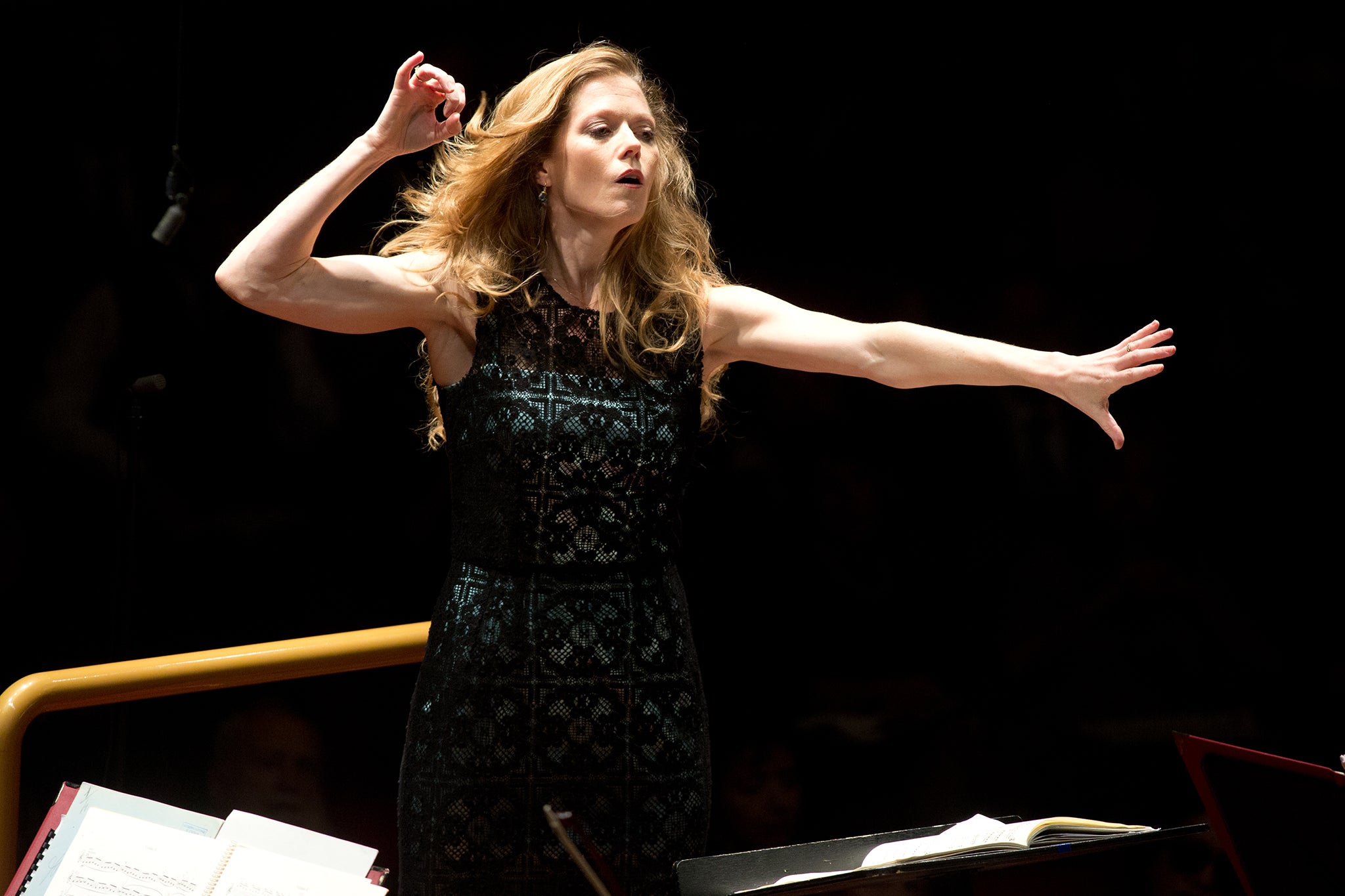Barbara Hannigan in Focus II, Barbican, review: First attempt to sing and direct hits high note
What it lacked in bite Hannigan made up for in warmth

Soprano Barbara Hannigan is one of our most brilliant and versatile singing actresses, as comfortable with Boulez and Ligeti as with Mozart and Handel, and she’s added a new string to her bow.
For her programme with the Britten Sinfonia at the Barbican – a felicitous blend of Baroque and Stravinskian neo-Baroque - she would both sing and direct. Most female conductors dress and act like male ones, but as Hannigan stepped out in her coral-pink frock and gave the leader a kiss - not a handshake - the chemistry felt different. And so it proved in practice.
If the overture to Idomeneo was slightly lacking in bite, it made up for that in warmth; the overture to La Clemenza di Tito gave unusually clear hints of The Magic Flute, and the furious angularity of Haydn’s ‘La Passione’ symphony was softened: Hannigan opened our ears to latent alternatives. Stravinsky’s Pulcinella Suite is usually all jagged rhythms and acidulated timbral contrasts, but here it had a kind of tenderness.
It was inevitable that Hannigan’s first big test – simultaneously singing and directing Ann Trulove’s anguished prayer from Act 1 of The Rake’s Progress – should fail to work, because her dual roles were necessarily in conflict, both dramatically and technically. But she passed her second test with flying colours, singing Mozart’s hugely demanding concert aria Bella mia fiamma to ravishing perfection, while extracting finely calibrated support from the band.
Join our commenting forum
Join thought-provoking conversations, follow other Independent readers and see their replies
Comments